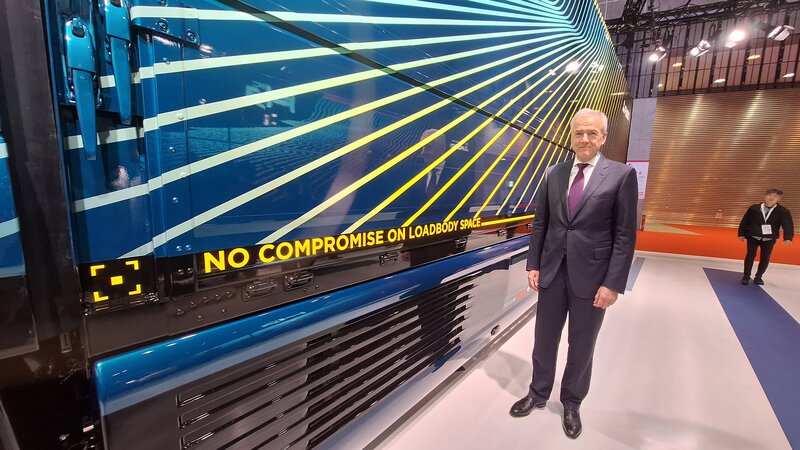MFTBC Unveils 2 Hydrogen-powered Heavy-duty Truck Concepts JMS 2025

Mitsubishi Fuso Truck and Bus Corporation held the world premiere of two hydrogen-powered heavy-duty truck concept models at the Japan Mobility Show 2025 (hereinafter JMS 2025), organized by the Japan Automobile Manufacturers Association at Tokyo Big Sight (Koto Ward, Tokyo) from October 30, 2025 to November 9, 2025.
Asian Trucker was on site to witness the unveiling. First impressions here.
MFTBC unveilws two concept models at JMS 2025, the “H2IC,” a heavy-duty truck powered by an internal combustion engine that combusts hydrogen, and the “H2FC,” a heavy-duty truck powered by a fuel cell system. MFTBC believes hydrogen is an effective means to achieve carbon neutrality for commercial vehicles involved in heavy-duty transport and long-distance haulage, owing to its high energy content, long range, and short refueling time.
By utilizing components and technologies common to diesel trucks, the “H2IC” could enable faster and smoother transition to hydrogen vehicles. In particular, H2ICE technology shows particular strength in high-power applications such as construction vehicles. The “H2IC” is fueled with compressed hydrogen gas.
In the “H2FC”, a fuel cell system converts hydrogen to electricity, which then powers an electric motor. The “H2FC” stores hydrogen in liquid form, which has a higher density compared to compressed hydrogen gas. This enables a vehicle with up to 1200 kilometers of driving range, refuellable in 15 minutes and with no compromise on load body space*.
In a Japan-first**, the heavy duty “H2FC” is equipped with a liquid hydrogen tank designed for subcooled liquid hydrogen (sLH2) refueling***. Jointly developed by Daimler Truck and Linde Engineering, a global leader in industrial gases and hydrogen infrastructure, this is a liquid hydrogen filling technology that eliminates the need to discharge the boil-off gas (evaporated hydrogen gas) by pressurizing hydrogen during refueling. It also reduces boil-off during operation. This addresses a challenge previously faced when handling liquid hydrogen. Furthermore, sLH2 significantly simplifies the equipment required at hydrogen stations when using compressed hydrogen gas, contributing to reduced infrastructure costs and the realization of a hydrogen society.
To establish the sLH2 technology in Japan, MFTBC has been conducting joint research with Iwatani Corporation (Headquarters: Osaka/Tokyo; President: Hiroshi Majima), the sole domestic supplier of liquid hydrogen****. The sLH2 is currently being discussed by the relevant parties with a view to develop ISO standardization. In Japan, MFTBC has been collaborating with Iwatani Corporation on joint research regarding sLH2 filling technology, regulations, and commercialization, advancing efforts to establish sLH2 filling technology in the country. MFTBC is also working to build collaborative frameworks with external companies and institutions to support the implementation of sLH2 refueling technology in Japan. At the MFTBC booth, visitors will be able to learn more about this cutting-edge technology through a panel discussion with Iwatani Corporation and dedicated exhibits on hydrogen technologies.
As a front runner in BEV solutions for light duty trucks, MFTBC now aims to demonstrate leading future ZEV solutions for heavy duty trucks also. At the JMS booth, visitors can experience MFTBC's envisioned future of transportation brought to life through exhibits showcasing solutions that are being developed together with customers and partners.

*Based on internal simulations, vehicle of GVW 25 ton, 80 kilogram capacity liquid hydrogen fuel tank
**MFTBC research, as of October 2025
***The sLH2 refueling process uses a pump to slightly increase the pressure of the liquid hydrogen, making it subcooled. Due to this pressure, the boil-off gas in the vehicle tank is re-liquified, eliminating the need to
discharge the boil-off gas.
**** As of Oct. 2025